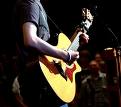I remember that in the days of paper dictionaries the words before and after “worship” were “worse” and “worst” respectively. Worship keeps the “worse” from getting to the “worst”!
Worship under the old and new covenant
Worship of God under the old covenant was a tedious, costly and bloody affair. The bull, sheep, or goat had to be taken to the priests for checks. They had to be without defects to be accepted. Those who could not afford such costly sacrifices could offer doves instead. Once they pass the checks, the worshipper will kill the sacrificial animal and the priest will offer the best parts, or all the parts on the altar fire to be burnt as an offering to God to atone for the worshipper’s sins. The innocent life of the animal sacrifices paid for and covered the sins of the worshipper. Under the new covenant, animal sacrifices are no longer needed as Christ became the ultimate and sinless Lamb of God who was sacrificed on the cross to take away the sins of the world.
Under the old covenant, during the Day of Atonement, the High Priest would enter the Most Holy Place once a year with the blood from two sin offerings. The blood of a bull is atonement for his sins. The blood of a goat is for the sins of the nation of Israel. In this way, he made atonement for himself and the sins of Israel. He did this year after year. This annual ceremony pointed to a future coming of the Messiah who would be both the greater high priest and sacrifice.
Under the new covenant, we have a better high priest and a better sacrifice. Jesus himself was the ultimate High Priest and the ultimate Sacrifice. Hebrews 9:12 describes this finished work of Christ: “he did not enter by means of the blood of goats and calves; but he entered the Most Holy Place once for all by his own blood, thus obtaining eternal redemption.” It was a once for all sacrifice that obtained our eternal redemption. It meant all our sins were forgiven and we have right standing with God and continual access to him. We do not worship to attain peace with God or right standing before God. Instead, right standing and peace with God have been achieved for us who put our faith in Christ. Our worship is therefore a grateful response to the finished work of Christ that secured our salvation.
Therefore, I urge you, brothers and sisters, in view of God’s mercy (Christ’s finished work), to offer your bodies (instead of animal sacrifices) as a living sacrifice (instead of dead animal sacrifices), holy and pleasing to God – this is your true and proper worship. (Romans 12:1 NIV– my comments bracketed)
True and proper worship springs from Christ’s death and resurrection. We do not worship to obtain favours from God. It is a grateful thankfulness that Christ has already obtained and earned salvation for us. It is not mainly singing songs of praise to God and thanking him in a worship service or private prayer. These are important but one of many expressions of gratitude to God. In essence, worship has to do with fully surrendering our whole lives to God. We live our lives in gratitude and surrender and this pleases God. The process of surrender takes time as we let God renew our minds and transform our whole selves (all that we are and have). When I allow God to rule my life more and more in all that I do, be it studying, serving National Service, working in the marketplace, raising a family, or serving among God’s people, I am a true worshipper.
“Yet a time is coming and has now come when the true worshipers will worship the Father in Spirit and truth, for they are the kind of worshipers the Father seeks. God is Spirit and his worshipers must worship in Spirit and truth” (John 4:23,24 NIV). When the good news of Jesus’ finished work is preached and people respond in faith to the message, they are born again by the Holy Spirit and will be able to worship in the Spirit as they ponder over the wonderful truths of salvation. Without the finished work of Christ, there is no true worship! Without worship, our life moves from “worse” to “worst”.
Prayer
Dear Father, thank you for sending your Son as our High Priest and ultimate sacrifice so that our sins can forever be dealt with and we can then worship you with gratitude and surrender. Empower us to live our lives more and more fully in this path of pleasing you. Amen.


